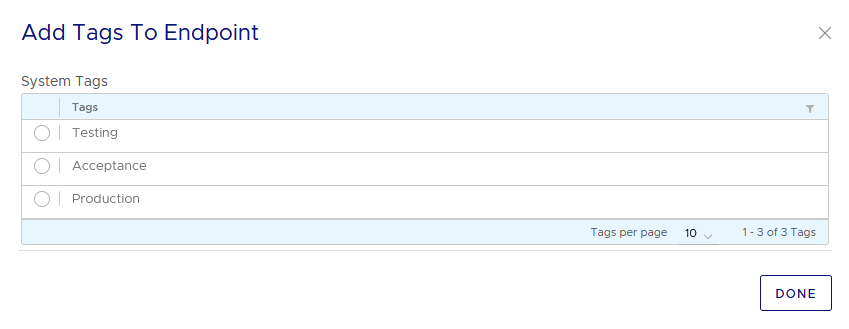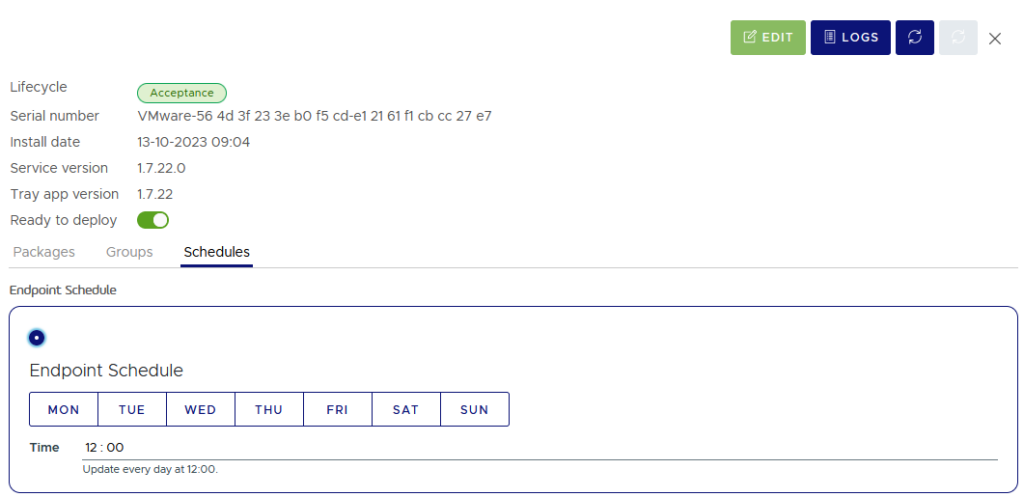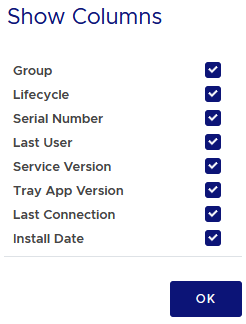Endpoints #
This view lists all the endpoints that have been registered. The info displayed are the endpoint name, their active status, the groups the belong to, their lifecycle tag, their serial number, last connection and on which date they have been registered.
Changing lifecycle tag #
Select the endpoints with the checkbox
Click on the “Add tags to endpoint” button.
![]()
Choose the lifecycle stage and click on “done”.

Setting an update schedule #
Setting up an update schedule for endpoints works the same is setting up an update schedule for groups although this setting takes priority over the setting set up for any groups that are attached to an endpoint.

Assign packages to an endpoint #
To assign packages directly to an endpoint, click on the edit button inside the detailed view.

After that, drag and drop the packages you wish to assign or assign blueprints by clicking on the + button in front of “Blueprints” where you can select multiple blueprints.

Activate the “Immediate deployment” switch if you want to start the installation automatically and hit “Save”.
For packages to be able to be installed, be sure the “Ready to Deploy” switch is activated.
This is found in the detailed view in front of the Edit button.

Following the status during deployment #
The frontend allows you to monitor the status of an ongoing deployment.
In the detailed view of an endpoint under the packages tab, you will see all the packages that are assigned to this endpoint and from where the assignment comes from (group, blueprint, or endpoint assignment), as well as their install status being:
| Not started | |
| In Progress | |
| Succesfull install | |
| Installation failed |
To follow up the deployment in more detail, click the “Logs” button. In this view, you can click on any package to see what is happening during its installation.
![]()
You can also view the Endpoint logs after a deployment has finished. To view these, click on “Endpoint Logs” and if it is your first time in this view you will be asked to fetch the logs from the endpoint. After the logs have been fetched, click on a log just like the Package logs to view their contents.
Deleting an endpoint #
Normally if NimDeploy is uninstalled, it should unregister the endpoint automatically. But if the endpoint is not unregistered, you could manually delete it from the frontend.
To do this select the endpoints you wish to remove with the checkboxes and click the “Delete Endpoint” button.
![]()
Change visible columns on Endpoint view #
You may want to view only certain relevant columns of information in the Endpoint table view. To achieve this, click on the gear button located at the top right corner of the table and deselect the columns you want to hide.
